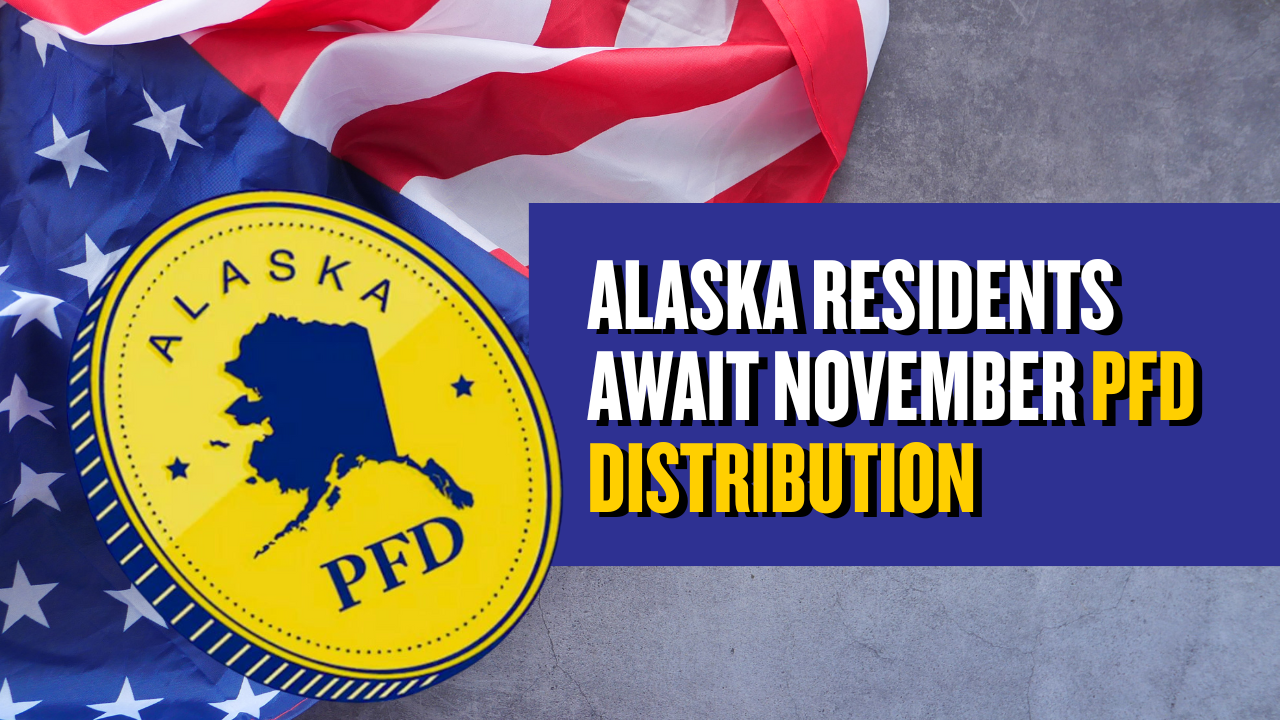Hundreds of thousands of Alaska residents remain in queue for their annual resource wealth distribution payment, with the Alaska Department of Revenue confirming November 20, 2025 as the next disbursement date for the state’s signature benefit program.
The Permanent Fund Dividend represents Alaska’s distinctive approach to sharing natural resource revenues directly with residents. This year’s payment amount stands at $1,000 per eligible individual, derived from investment earnings generated by the state’s oil and gas industry proceeds.
Next Payment Wave Scheduled
State officials have designated November 20, 2025 as the distribution date for applications holding “Eligible-Not Paid” status following verification procedures completed on November 12, 2025. The automated payment system will process both direct deposits and mailed physical checks simultaneously.
This round specifically addresses applications that cleared eligibility requirements after October’s mass distribution cycle. The November cohort includes both electronic and paper submissions requiring extended processing due to documentation verification or minor data inconsistencies resolved subsequent to earlier cutoff dates.
Annual Program Reaches Over 600,000 Participants
While precise figures for this distribution wave have not been publicly released, annual statistics indicate more than 600,000 Alaska residents typically qualify for the dividend each year. The majority of these recipients received their disbursements during October’s primary distribution phase, making those awaiting November payments a proportionally smaller group.
The $1,000 payment amount reflects current year calculations based on fund performance and legislative determinations. This figure represents a decrease from the previous year’s $1,702 dividend, attributed to economic factors affecting fund earnings and state fiscal policy adjustments.
Stringent Eligibility Standards Govern Access
Alaska’s dividend program maintains rigorous qualification criteria established through state statute. Applicants must demonstrate continuous physical presence within Alaska throughout the entire 2024 calendar year, establishing residency for a minimum of 180 consecutive days during that period.
Additional requirements mandate intent to maintain permanent Alaska residency indefinitely and prohibition against claiming residency status in other jurisdictions. Criminal history provisions disqualify individuals convicted of felony offenses during the eligibility period.
The application window for 2025 dividends closed March 31, 2025, with late submissions accepted only under exceptional circumstances requiring documented justification. No biometric identity verification protocols are incorporated into the approval process, according to program documentation.
Common Delay Factors Identified
Processing postponements typically stem from predictable administrative circumstances. Applications submitted near the March deadline often require extended review periods, particularly when verification of supplemental documentation becomes necessary.
Changes to banking information or residential addresses not communicated to state authorities before established cutoff dates frequently trigger payment holds. The Permanent Fund Dividend Division does not publish real-time data regarding the volume of applications pending in “Eligible-Not Paid” status at any given moment.
Ongoing Distribution Schedule Extends Into 2026
Following the November 20 disbursement, the Department of Revenue has established additional monthly distribution cycles continuing through the fiscal year. These subsequent rounds accommodate applications currently undergoing review processes and resolve favorably adjudicated cases from previous years.
The pattern follows an established disbursement framework with specific verification dates determining payment timing. December applications maintaining “Eligible-Not Paid” status through verification on December 10, 2025 will receive distributions on December 18, 2025. This cyclical structure continues on a monthly basis.
Online Verification System Available
Residents seeking current information regarding their application status can access the myPFD system through the official state portal at any time. Account login credentials permit individuals to verify whether their designation remains “Eligible-Not Paid” or has transitioned to “Paid” status.
The web-based platform provides real-time status updates and enables applicants to update critical personal information including mailing addresses and direct deposit banking details. Timely information updates through the portal expedite payment processing and reduce likelihood of misdirected funds.
Payment Recovery Procedures
Individuals experiencing payment delivery failures due to lost checks or outdated contact information should initiate direct communication with the Alaska Department of Revenue through established channels. The department maintains dedicated support infrastructure for addressing payment complications.
Personal data modifications, encompassing both residential addresses and electronic funds transfer information, must be submitted through the official online portal to ensure proper integration into payment systems. The division cannot process address or banking changes via telephone communication for security purposes.
Historical Context and Program Origins
The Permanent Fund Dividend launched operations in 1982 as a mechanism for distributing investment returns from the Alaska Permanent Fund to state residents. The fund itself was established in 1976 through a constitutional amendment requiring deposit of mineral extraction revenues into a dedicated investment pool.
Annual dividend amounts fluctuate based on fund performance, legislative appropriation decisions, and economic conditions affecting oil markets. The program has distributed billions of dollars to Alaska residents over four decades, representing one of the world’s few direct resource revenue distribution systems operating at governmental scale.
Economic Impact Throughout Alaska
The annual infusion of dividend funds generates substantial economic activity throughout Alaska’s communities, particularly in rural and remote areas where living costs exceed national averages. Retail sectors, utility providers, and essential service businesses experience measurable revenue increases during distribution periods.
Economic analysis indicates each dividend dollar circulates multiple times through local economies before exiting state commerce channels. For households in Alaska’s interior villages and coastal communities, where transportation expenses and heating costs impose significant financial burdens, the annual payment provides critical budgetary relief during winter months.
The dividend program maintains strong public support across Alaska’s political spectrum, serving as a tangible connection between natural resource extraction activities and direct citizen benefit. Despite periodic debates regarding appropriate payment levels and fund management strategies, the fundamental concept of resource wealth sharing remains deeply embedded in Alaska’s civic culture.



